Route Baramsseoneun-gil (바람쐬는길)
12.6Km 2024-04-08
21, Baramsseoneun-gil, Wansan-gu, Jeonju-si, Région Jeonbuk
La route Baramsseoneun-gil désigne la route entre Jeonju Eco Museum et le tunnel Hanbyeok. Le nom de la route provient du ventqui souffle le long de la route, faisant de l'endroit un endroit conseillé pour les promenades.
La route a également été choisie par le KTO comme l'un des meilleurs chemins à parcourir avec son animal de compagnie. On trouve aussi une station de prêt de vélo situé le long du chemin. Le tunnel Hanbyeok est connu en tant que lieu de tournage du drama "Twenty-five Twenty-one (2022)".
Lycée Jeil (전주 제일고등학교)
12.6Km 2024-10-25
180-1 Namnosong-dong, Wansan-gu, Jeonju-si, Jeju
La scène de Na Heedo (Kim Taeri) et de Baek Iijin (Nam Joohyuk) a été tournée dans ce lycée à Jeonju.
Pavillon de Hanbyeokdang (한벽당)
12.7Km 2024-04-07
2, Girin-daero, Wansan-gu, Jeonju-si, Région Jeonbuk
+82-63-281-2166
Le Pavillon de Hanbyeokdang, situé dans la province du Jeollabuk-do, a été désigné propriété culturelle réelle No. 15. En 1404 lors du royaume de Joseon, un haut-fonctionnaire avait construit cette demeure comme résidence secondaire. Elle se trouve au pied du Mont Seungamsan donnant sur le splendide panorama du fleuve Jeonjucheon. Malheureusement, une autoroute a été créée dans les environs depuis, et la beauté du paysage en a souffert. Dans le passé, nombre d’écrivains étaient à la recherche du Pavillon de Hanbyeokdang afin de donner substance à leur inspiration. Ce dernier est aussi connu pour la beauté de la montagne qui l’entoure, ses brumes flottant au loin. C’est ainsi un des 8 lieux à voir absolument à Jeonju.
Tunnel Hanbyeok (한벽터널)
12.7Km 2024-04-08
Hanbyeok-dang, 7-3 San, Gyodong, Wansan-gu, Jeonju-si, Région Jeonbuk
Le tunnel Hanbeok est réputé pour ses vues romantiques apparues dans divers dramas en Corée, notamment "Twenty-Five Twenty-one".
Forêt récréative de Gosan (고산자연휴양림)
12.9Km 2024-04-07
246, Gosanhyuyangnim-ro, Gosan-myeon, Wanju_Gun, Région Jeonbuk
+82-63-263-8680
Située à Osan-ri Gosan-myeon, la forêt récréative de Gosan est très populaire auprès des familles pour des excursions tout au long de l’année. La forêt offre une combinaison unique de mélèzes, pins blancs coréens et pins rigides, des arbres à feuilles larges et des roches aux formes insolites, offrant un site exceptionnel pour des instants de relaxation et d’amusement. Au printemps, de nombreuses fleurs sauvages éclosent, à l’image des azalées et des fleurs de cerisiers sauvages. En été, les forêts épaisses et l’eau fraîche descendant dans la vallée sont un spot parfait pour se détendre et récupérer des chaleurs torrides de la région. A l’automne, la forêt est couverte de feuilles mortes aux couleurs rougeoyantes et en hiver, un manteau de neige scintillante recouvre la totalité du site, qui devient un un paysage romantique.
Village des peintures murales de Jaman (자만벽화마을 - 외국어사이트용)
12.9Km 2024-04-07
1-10, Jamandong 1-gil, Wansan-gu, Jeonju-si, Région Jeonbuk
Le village des peintures murales de Jaman est un petit village situé en face du village hanok de Jeonju, sur la colline d’une montagne. On peut trouver des maisons alignées les unes aux autres sur les pentes du village, sur les murs on trouve des peintures de toutes les couleurs.
Le village des peintures murales Jaman (자만마을 벽화갤러리)
12.9Km 2025-08-12
Gyodong, Wansan-gu, Jeonju-si, Jeonbuk
Le village des peintures murales de Jaman se trouve sur une colline paisible, séparée du village traditionnel de Hanok de Jeonju par une simple route. Niché au pied du mont Seungamsan, ce quartier était à l’origine un bidonville formé progressivement par des réfugiés de la guerre de Corée.
C’est en 2012, dans le cadre d’un projet de sentier vert, qu’il a commencé à se transformer : des fresques ont été peintes sur une quarantaine de maisons, donnant au lieu une toute nouvelle identité. Aujourd’hui, chaque ruelle dévoile une série de peintures aux styles variés — fleurs, contes, paysages — offrant aux visiteurs une promenade aussi visuelle que divertissante.
Au fil de la balade, on découvre le Geumpyo de Jaman-dong, une stèle marquant l’emplacement de la maison de Yi An-sa, ancêtre du roi Taejo, fondateur de la dynastie Joseon. En montant un peu, on accède également au jardin sur le toit, un belvédère apprécié pour sa vue dégagée sur la ville de Jeonju sous un ciel bleu éclatant.
Le quartier abrite aussi de charmants cafés, des maisons d’hôtes et quelques restaurants, ce qui en fait une halte idéale pour les voyageurs. La visite complète prend environ 30 minutes. Proche des sites historiques d’Omokdae et d’Imokdae, le village est souvent intégré à des circuits culturels appréciés.
Jeonju Hyanggyo (école confucéenne) (전주향교)
13.0Km 2025-08-12
139, Hyanggyo-gil, Wansan-gu, Jeonju-si, Région Jeonbuk
+82-63-288-4548
Fondée durant la dynastie Joseon (1392-1910), Jeonju Hyanggyo a été déclarée site historique n° 379. Signifiant « école provinciale », Hyanggyo était un établissement national d’éducation installé en province qui fournissait des enseignements confucianistes pendant la dernière dynastie coréenne. L’école confucéenne de Jeonju était située originairement aux alentours du lieu saint Geonggijeon, mais elle a été déplacée à son endroit actuel en 1603.
Elle abrite les plaques commémoratives de sept confucianistes chinois, y compris Confucius, et de dix-huit savants coréens dans le bâtiment principal appelé Daesungjeon. Composée de ce bâtiment et de seize autres, cette école figure parmi les plus grands établissements d’éducation de par sa taille.
Bu Yong Heon / 부용헌
13.0Km 2025-03-04
149-3, Hyanggyo-gil, Wansan-gu, Jeonju-si, Région Jeonbuk
+82-10-8646-0964
Buyongheon is located in Jeonju Hanok Village. Precisely speaking, Buyongheon is the very next door to Jeonju Hyanggyo (Confucian Temple and School). Across the alley are Jeonju Hyanggyo Culture Center and Wanpanbon Culture Center. If you walk a few more steps, you will reach Jeonju Hanbyeok Culture Center where you can see various performances and experience the culture and foods of Jeonju. Omokdae can be seen from the garden of Buyongheon. Across the Jeonjucheon Stream is the National Intangible Heritage Center.
The beginning of Buyongheon is deeply related with Jeonju Hyanggyo. In around 1935, the local bureaucrats lived around the Hyanggyo after building 12 houses one after another. Most of them came from rich families. These collective houses were called Buyong Houses, which meant rich houses. The name Buyongheon originated from Buyong Houses. The rooms of Buyongheon are composed of Toenmaru Bang, Daecheong Maru Bang, Large Daecheong Maru Bang and Big Sarangchae. The interior of the rooms looks neat with the beauty of blank space as they excluded unnecessary decorations. Carefully prepared breakfast is served upon request made in advance. Visitors can also experience traditional culture such as traditional etiquette education and Korean paper art.
In fall, the yellow leaves of the ginkgo tree in the garden of Jeonju Hyanggyo lights up the roof of Buyongheon. It is recommendable to walk along the Jeonjucheon Stream and take pictures of the colorful murals and the cafes in the Jaman Mural Village located on the left sie of the Hanok Village. It takes 15 minutes from Jeonju Station and 10 minutes from Jeonjuu Express Bus Terminal to Buyongheon by taxi.
Jeonggahanog / 정가한옥
13.0Km 2025-03-05
78-3, Girin-daero, Wansan-gu, Jeonju-si, Région Jeonbuk
+82-10-9934-1300
Jeongga Hanok is a space where the traditional beauty of hanok and the modern comfort co-exists. The newly built Hanok is neat and pleasant. When you enter the small cobbled yard, the porch and the eaves will welcome you, and you’ll find that the rooms are filled with delicate wood fragrance. The interior is furnished with Korean cypress trees and red clay. In particular, the Cypress Tree room is all made of cypress trees, from the walls to the ceiling, making guests feel like they are lying in a forest. Maple Room and Ginkgo Tree Room, meanwhile, have attics.
Jeongga Hanok faces Jeonju Hanok Village with the Girin-daero in the middle. Hanok Village is just across the road. Major attractions such as Gyeonggijeon, Jeondong Catholic Cathedral, and Jeonjuhyanggyo Confucian School are all within walkable distance. Omokdae, which offers an unhindered view of Hanok Village, is located over the pedestrian overpass. Jaman Mural Village, famous for colorful mural and cozy cafes, is about 300 meters away and a great spot for selfie lovers.
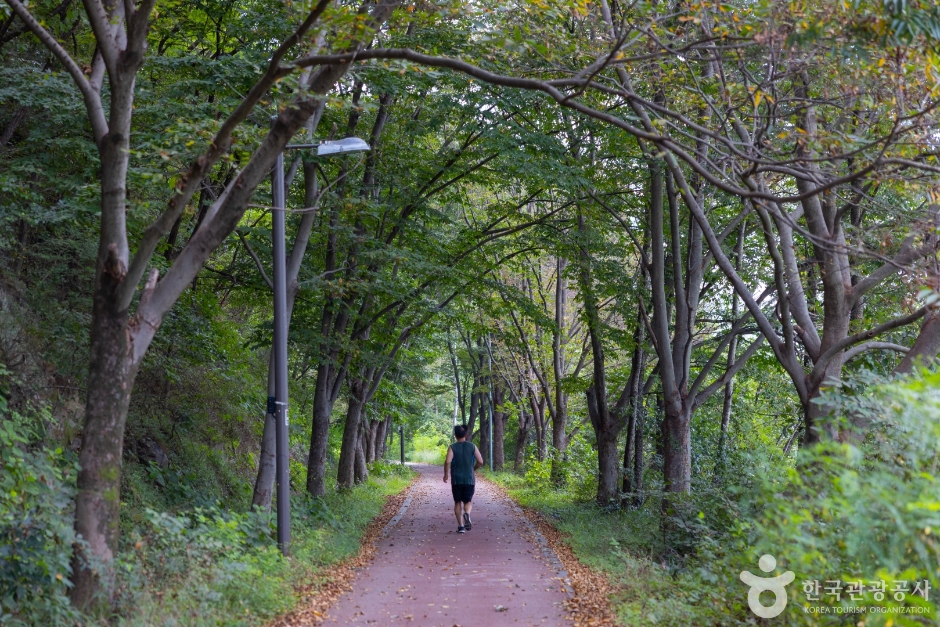

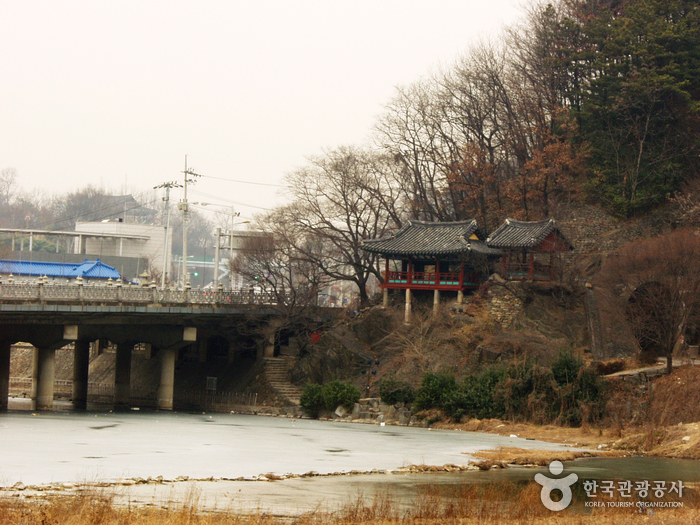

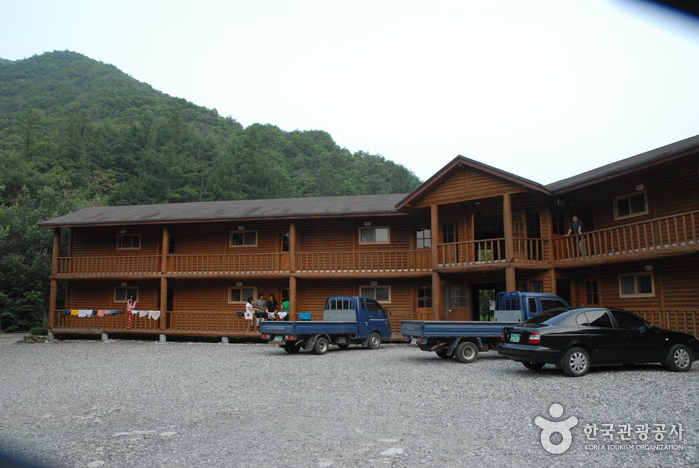

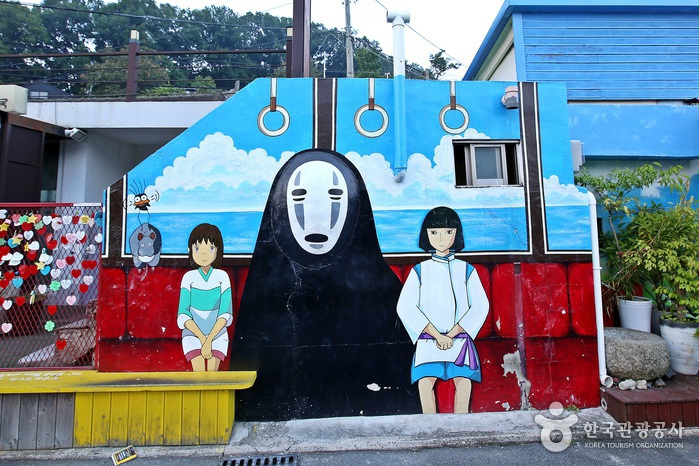
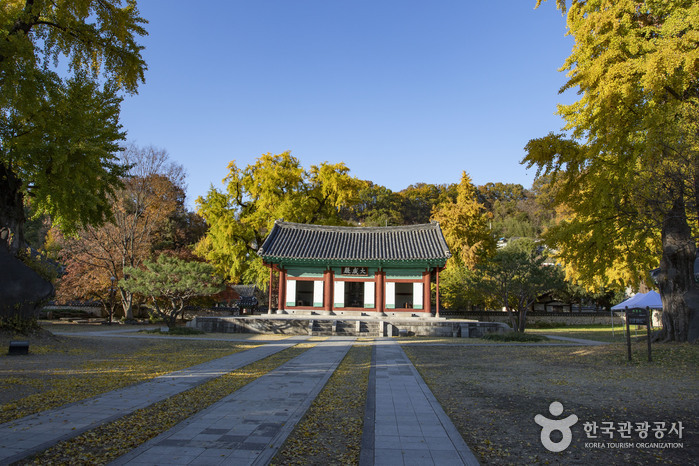
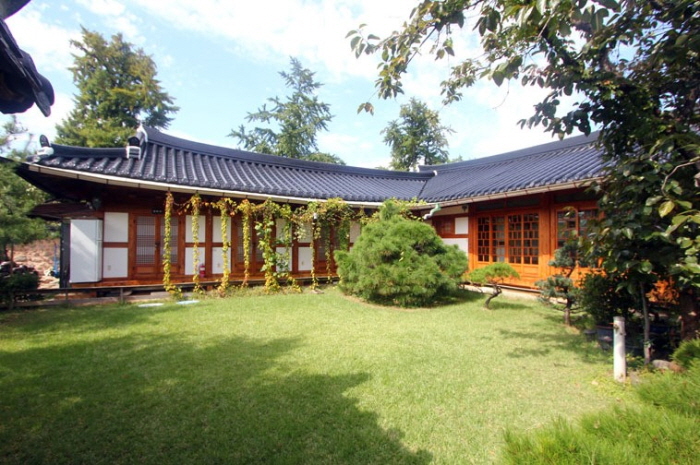
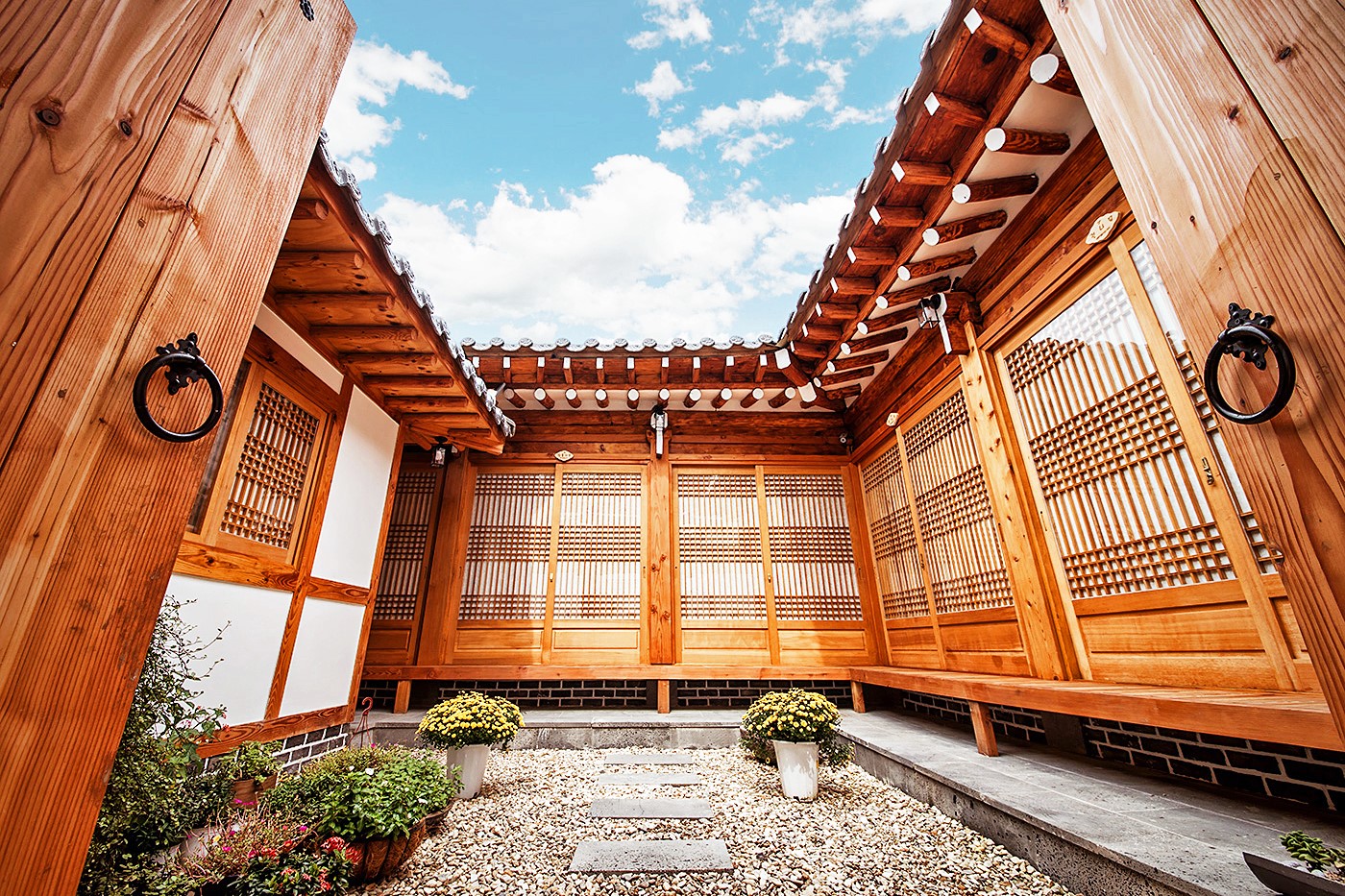
 Français
Français
 한국어
한국어 English
English 日本語
日本語 中文(简体)
中文(简体) Deutsch
Deutsch Español
Español Русский
Русский